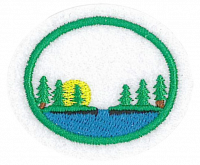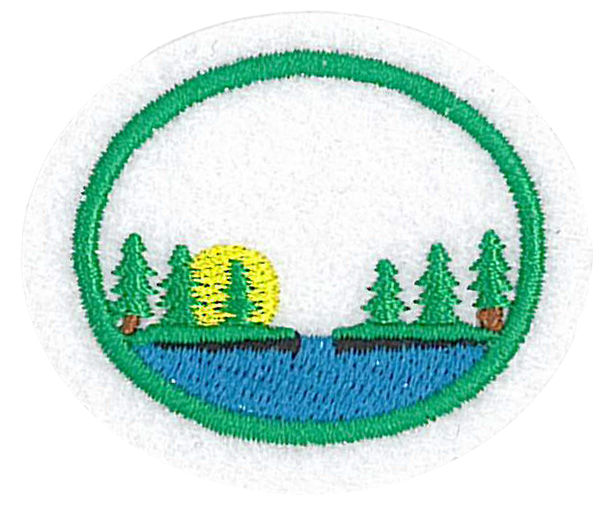Difference between revisions of "AY Honors/Bogs & Fens/Requirements"
Jomegat bot (talk | contribs) m (Jomegat bot moved page Adventist Youth Honors Answer Book/Nature/Bogs & Fens/Requirements to AY Honors/Bogs & Fens/Requirements: Bot: Moved page) |
m (- Category of Honor Requirements) |
||
| (6 intermediate revisions by 2 users not shown) | |||
| Line 1: | Line 1: | ||
| − | + | {{HonorSubpage}} | |
| − | |||
| − | |||
| − | + | <section begin=Body /> | |
| − | |||
| − | <b> | + | <b>1. <section begin=req1 /><noinclude><translate><!--T:1--> |
| − | <section end= | + | </noinclude>What is a bog? How is it unique? |
| + | <noinclude></translate></noinclude><section end=req1 /></b> | ||
| − | <b> | + | <b>2. <section begin=req2 /><noinclude><translate><!--T:2--> |
| − | <section end= | + | </noinclude>Where are bogs found? |
| + | <noinclude></translate></noinclude><section end=req2 /></b> | ||
| − | <b> | + | <b>3. <section begin=req3 /><noinclude><translate><!--T:3--> |
| − | <section end= | + | </noinclude>Name 6 things that are needed for bog formation. |
| + | <noinclude></translate></noinclude><section end=req3 /></b> | ||
| − | <b> | + | <b>4. <section begin=req4 /><noinclude><translate><!--T:4--> |
| − | <section end= | + | </noinclude>Name and describe three different types of true bogs. |
| + | <noinclude></translate></noinclude><section end=req4 /></b> | ||
| − | <b> | + | <b>5. <section begin=req5 /><noinclude><translate><!--T:5--> |
| − | <section end= | + | </noinclude>What is the difference between a bog and fen? What is succession and how do bogs and fens illustrate this process? |
| + | <noinclude></translate></noinclude><section end=req5 /></b> | ||
| − | <b> | + | <b>6. <section begin=req6 /><noinclude><translate><!--T:6--> |
| − | <section end= | + | </noinclude>What are some adaptations of bog plants? |
| + | <noinclude></translate></noinclude><section end=req6 /></b> | ||
| − | <b> | + | <b>7. <section begin=req7 /><noinclude><translate><!--T:7--> |
| − | <section end= | + | </noinclude>What is Sphagnum Moss and how is it vital to bogs? |
| + | <noinclude></translate></noinclude><section end=req7 /></b> | ||
| − | <b> | + | <b>8. <section begin=req8 /><noinclude><translate><!--T:8--> |
| − | <section end= | + | </noinclude>What are carnivorous plants and what makes them bog specific? Name and describe at least two of them. |
| + | <noinclude></translate></noinclude><section end=req8 /></b> | ||
| − | <b> | + | <b>9. <section begin=req9 /><noinclude><translate><!--T:9--> |
| − | <section end= | + | </noinclude>Name and describe five other plants or trees, which are found in bogs. |
| + | <noinclude></translate></noinclude><section end=req9 /></b> | ||
| − | <b> | + | <b>10. <section begin=req10 /><noinclude><translate><!--T:10--> |
| − | <section end= | + | </noinclude>Name and describe 5 animals that can be found in bogs and fens. |
| + | <noinclude></translate></noinclude><section end=req10 /></b> | ||
| − | <b> | + | <b>11. <section begin=req11 /><noinclude><translate><!--T:11--> |
| − | < | + | </noinclude>Tell a story about bogs and draw a spiritual lesson. |
| + | <noinclude></translate></noinclude><section end=req11 /></b> | ||
| − | + | <section begin=challenge /> | |
| − | <section end= | + | <b>12. <section begin=req12 /><noinclude><translate><!--T:12--> |
| + | </noinclude>Do at least 2 of the following activities: | ||
| + | <noinclude></translate></noinclude><section end=req12 /></b> | ||
| − | :<b> | + | :<b>a. <section begin=req12a /><noinclude><translate><!--T:13--> |
| − | <section end= | + | </noinclude>Visit an exhibit or conservatory of wetland plants, specifically mosses (Sphagnum variety if possible) and carnivorous plants. Look for how they are adapted to living in poor soil, cold temperatures and lack of nutrients. |
| + | <noinclude></translate></noinclude><section end=req12a /></b> | ||
| − | :<b> | + | :<b>b. <section begin=req12b /><noinclude><translate><!--T:14--> |
| − | <section end= | + | </noinclude>Visit a zoo where there are wetland animals. If possible, observe some of the ones you studied while learning about bogs. |
| + | <noinclude></translate></noinclude><section end=req12b /></b> | ||
| − | :<b> | + | :<b>c. <section begin=req12c /><noinclude><translate><!--T:15--> |
| − | <section end= | + | </noinclude>Watch a DVD or video about bogs or plants or animals that live in bogs. |
| + | <noinclude></translate></noinclude><section end=req12c /></b> | ||
| − | :<b> | + | :<b>d. <section begin=req12d /><noinclude><translate><!--T:16--> |
| − | <section end= | + | </noinclude>Draw or paint a picture of something you had fun learning about while studying bogs. |
| + | <noinclude></translate></noinclude><section end=req12d /></b> | ||
| − | + | :<b>e. <section begin=req12e /><noinclude><translate><!--T:17--> | |
| − | + | </noinclude>Talk to your group, or write about or make a short video about a real life bog conservation project. Explain why this specific habitat should be saved, i.e. endangered species of plants and/or animals living there. | |
| + | <noinclude></translate></noinclude><section end=req12e /></b> | ||
| + | <section end=challenge /> | ||
| + | <section end=Body /> | ||
Latest revision as of 20:47, 20 July 2022
1. What is a bog? How is it unique?
2. Where are bogs found?
3. Name 6 things that are needed for bog formation.
4. Name and describe three different types of true bogs.
5. What is the difference between a bog and fen? What is succession and how do bogs and fens illustrate this process?
6. What are some adaptations of bog plants?
7. What is Sphagnum Moss and how is it vital to bogs?
8. What are carnivorous plants and what makes them bog specific? Name and describe at least two of them.
9. Name and describe five other plants or trees, which are found in bogs.
10. Name and describe 5 animals that can be found in bogs and fens.
11. Tell a story about bogs and draw a spiritual lesson.
12. Do at least 2 of the following activities:
- a. Visit an exhibit or conservatory of wetland plants, specifically mosses (Sphagnum variety if possible) and carnivorous plants. Look for how they are adapted to living in poor soil, cold temperatures and lack of nutrients.
- b. Visit a zoo where there are wetland animals. If possible, observe some of the ones you studied while learning about bogs.
- c. Watch a DVD or video about bogs or plants or animals that live in bogs.
- d. Draw or paint a picture of something you had fun learning about while studying bogs.
- e. Talk to your group, or write about or make a short video about a real life bog conservation project. Explain why this specific habitat should be saved, i.e. endangered species of plants and/or animals living there.


